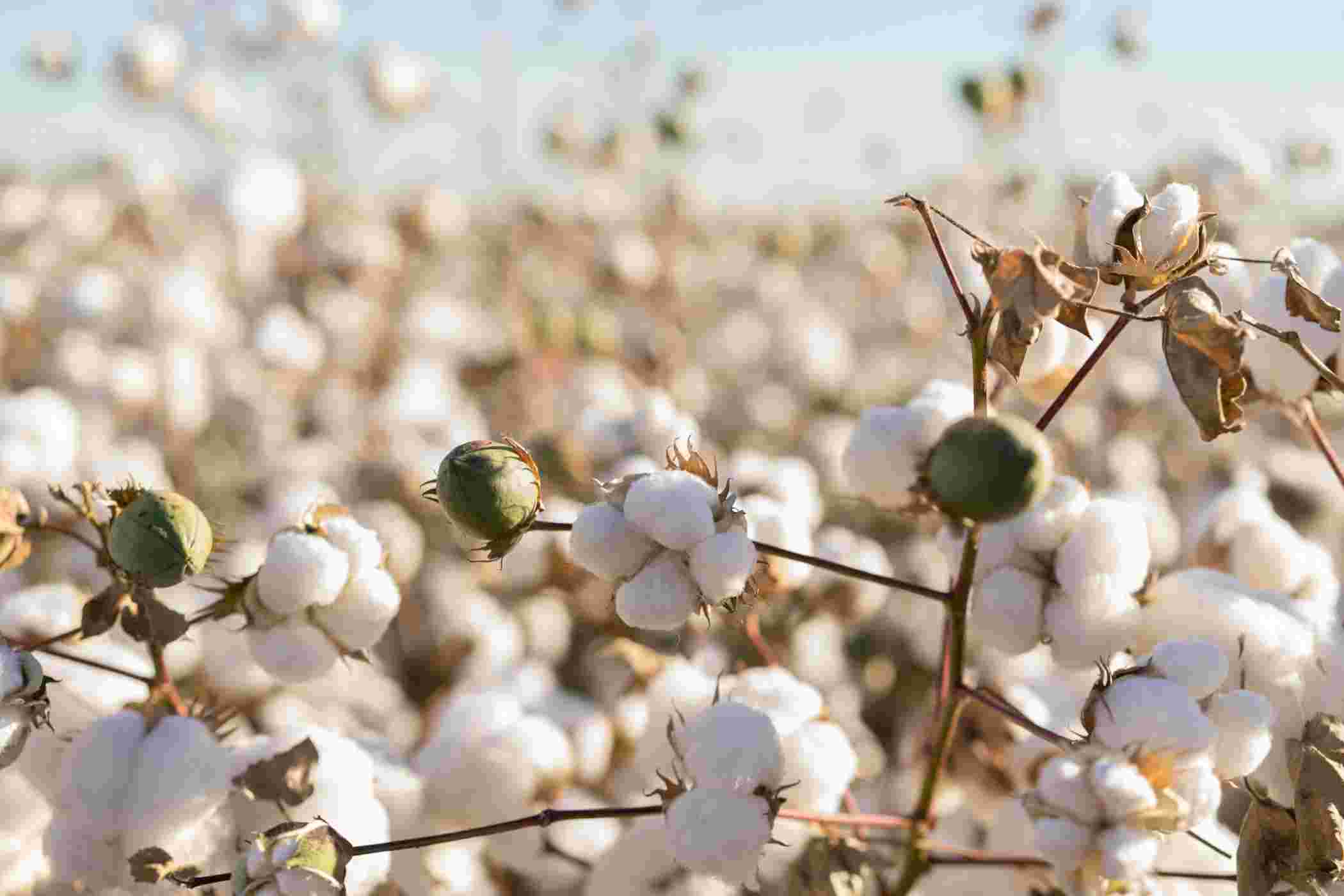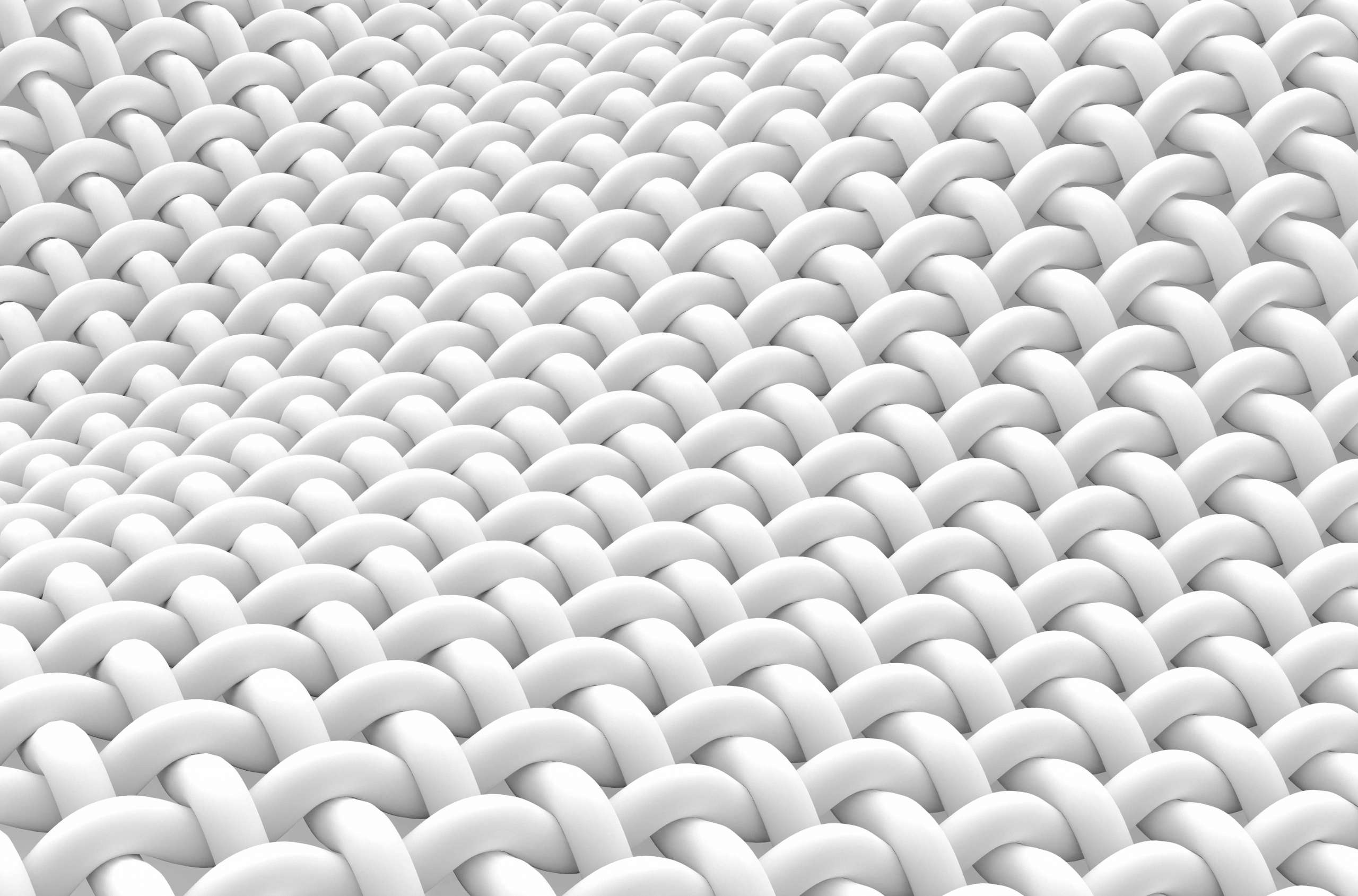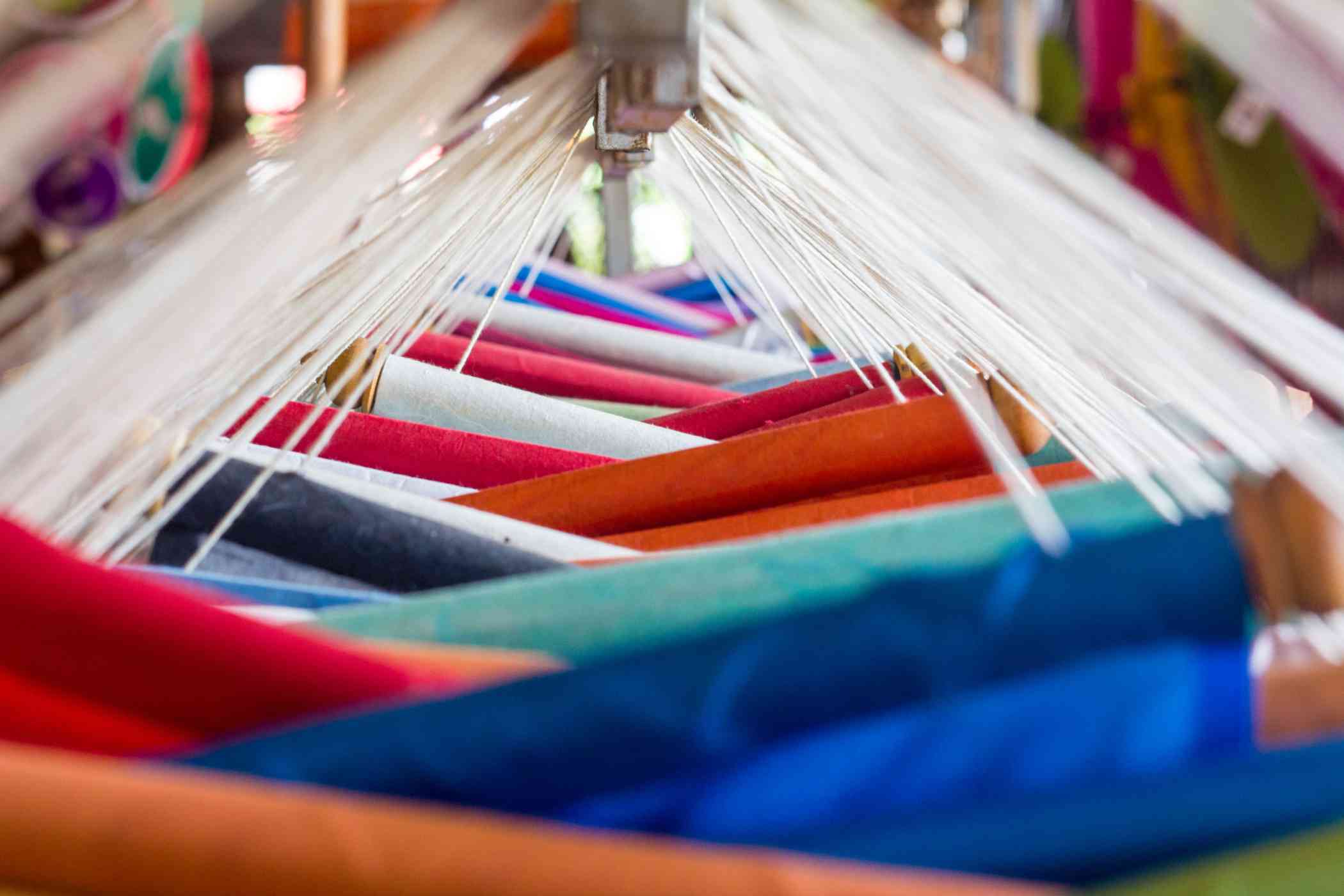The Pros and Cons of Different Types of Fabric


Fabric plays a vital role whenever we design or manufacture clothes. Choosing a proper material is as essential as finding the right size and color. With countless fabrics available in the industry, it can be hard to find the best fabric. It is necessary to know about apparel material to make the ideal choice. Each material comes with its pros and cons. Here are the pros and cons of some different types of fabrics.
1. Cotton
Cotton is a natural fiber obtained from cotton plants. It is used in all spheres of life and is probably the most common fabric used for apparel making. Cotton is a sustainable fiber as the whole cotton plant gets used without any wastage. This plant-based fabric is one of the most popular fabrics for clothing. It is inexpensive, easy to clean, soft, and durable. Also, this natural and modifiable fabric can transform into many other fabrics like Oxford, Moleskin, Muslin, Jersey, Lawn, and Denim.
Pros of Cotton Fabric
- Soft, light, and breathable fabric
- Easy to clean and machine washable
- A very versatile material; there are millions of different kinds of cotton fabrics
- Suitable for all age groups
- Comfortable and good at absorbing moisture
- Good for sensitive skin and allergies
- A low-maintenance fabric
Cons of Cotton Fabric
- The color of the apparel can fade over time
- Clothing can shrink in hot water
- Dyes can wash off while being washed
- The apparel wrinkles a lot
- Does not dry quickly
2. Polyester
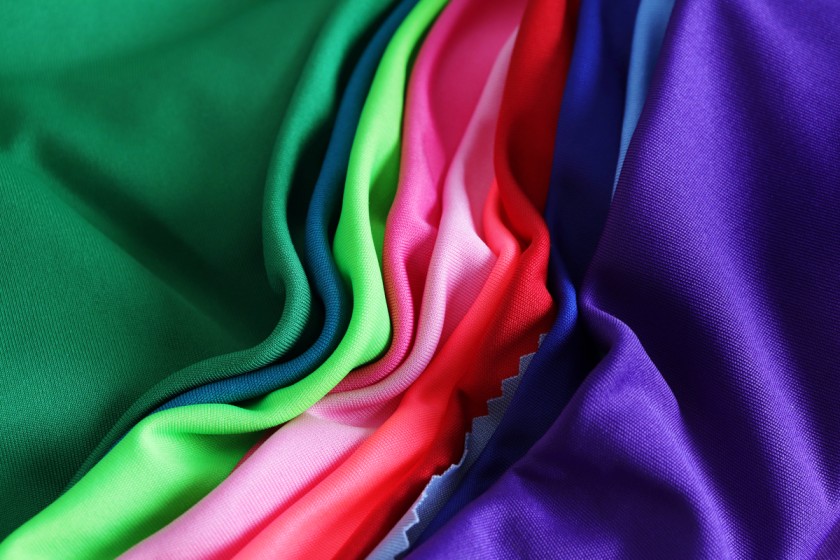
Polyester is a high-in-demand synthetic fabric made from a chemical reaction of natural elements. It is very durable and does not shrink. It is a thermoplastic fabric and can melt down and reform to various shapes. It is very soft and comfortable. Polyester commonly blends with other synthetic or natural fabrics. This fabric does not allow mildew to form on its surface.
Pros of Polyester Fabric
- Great at insulating heat
- A water-resistant fabric
- It is resistant to wrinkles
- Very durable and comfortable fabric
- It is a flexible fabric
- Polyester dries quickly as compared to fabrics like cotton
- It is easily cleanable and machine-washable
- Incredibly versatile
- It is long-lasting if well maintained
Cons of Polyester Fabric
- Polyester sticks to sweaty skin
- It is not very breathable
- Polyester is usually not eco-friendly
- The lighter colors of polyester are more likely to get stains more often than the darker colors
- It is sensitive to high temperatures and may meltdown
- It can cause skin allergies as it is a synthetic fabric
3. Wool
Wool is a natural renewable fabric that comes from sheep, goats, alpacas, and rabbits. Wool can be easily cleaned and it doesn’t need to go through cruel processes to achieve international hygiene accreditation standards. Wool reacts well to treatment and dying. It is more expensive than some other fabrics. Wool can blend with other synthetic fibers to make a more durable material. Blends of wool are more durable. Also, Wool can absorb smells and harmful chemicals.
Pros of Wool Fabric
- Wool is a comfortable fabric
- It is fire-resistant and does not need any chemical treatment
- It is environment-friendly
- Wool is a warm and insulating material
- It is wrinkle-resistant and moisture-wicking
- Wool is an odor-resistant fabric
- Wool can be reused
Cons of Wool Fabric
- Wool is more expensive than some other fabrics
- This fabric is prone to shrinking
- It can feel scratchy on the skin
- It requires special care/ dry cleaning
4. Leather
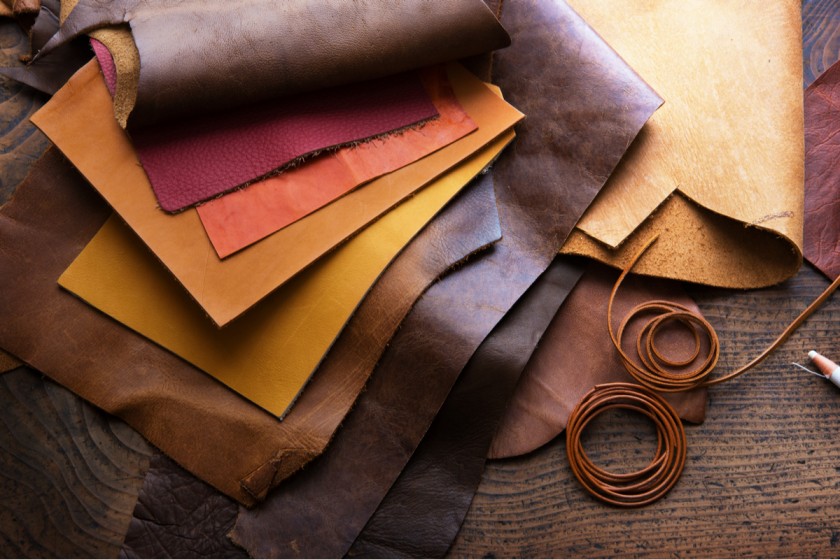
Leather is a renewable and natural fabric widely used in the fashion industry for attractive apparel. It is a very comfortable fabric and looks elegant. Leather is created when the skin of animals is removed, parched, salted, tanned, dyed, and completed with a finishing spray. It may sound cruel, but animal hides are actually a byproduct of the meat industry. The animal hides would otherwise be wasted if not turned into leather. Leather provides you with more comfort over time. It has high resistance to stains and mildew. Also, the fabric does not get affected by UV radiation and is highly comfortable.
Pros of Leather Fabric
- It hides scratches, making it good for places with slightly rash usage
- It ages well and gives you more comfort over time
- Leather is much easier to clean
- Leather can last longer than other fabrics if it’s taken care of properly
- A timelessly stylish fabric
- An advantage is that leather is hypoallergenic
- It is tough and durable
- It also doesn’t trap odors like other fabrics
Cons of Leather Fabric
- It can get sweaty and uncomfortable in warm environments
- It is quite expensive than similar products of fiber
- If the user has not properly cared for it, it will look dirty over time
- It is not very breathable
5. Silk
Silk is an organic fiber that is a good choice for stylish apparel making. It is a super soft and classy fabric. Silk is an expensive option for your apparel fabric. The finest silk comes from the silkworms produced by the Bombyx mori moth. You can choose from a wide variety of patterns and colors available in the market. Silk retains its shape quickly and is a durable material. Silk is one of the most desirable fabrics around. It is because silk is one of the smoothest and softest fabrics on the planet.
Pros of Silk Fabric
- Silk can last longer than other fabrics if taken care of properly
- There is a wide variety of weights, patterns, and colors
- It is soft and comfortable to wear
- It has a formal and luxurious look
- This fabric has temperature regulating properties
- It is biodegradable and can be recycled
- It resists odors
Cons of Silk Fabric
- It is expensive
- It requires dry cleaning
- The light fabric stains easily
- It does not react well to areas with pets, children, and direct sunlight
- Not much durable fabric
6. Cashmere
Cashmere is a natural fabric that is extremely rare and expensive. It is a form of wool that comes from the coat of cashmere goats. Cashmere Wool gets even softer as it is worn and washed and it rarely pills. Cashmere is also formed by shearing the coats of the animals and spinning them into yarn that's used to create warm clothing. This fabric will not insulate you as well as traditional sheep wool. It is soft enough to wear directly next to the skin. The fabric is also hypoallergenic.
Pros of Cashmere Fabric
- It can increase deep sleep and can keep the heart rate slow and steady
- It has good moisture absorption and keeps itself dry
- It is cool on the skin in summers and warm in winters
- It is fluffy and soft and does not harden easily
- Cashmere fabric is natural fire-resistant, safe and reliable
- Cashmere is a lightweight and breathable fabric
- It is an elegant fabric with wrinkle-resistant properties
- It is a dust-prevent and electric-resistant fabric
- It comes with antibacterial properties
- It is soft, warm, and insulating
Cons of Cashmere Fabric
- It requires special care/ dry cleaning
- Cashmere is very tender, so we need to care about it
- It is a short fiber and has weak strength
- It is not a very flexible material
- It is not very durable
- Piling can be an issue with cashmere fabric
7. Linen
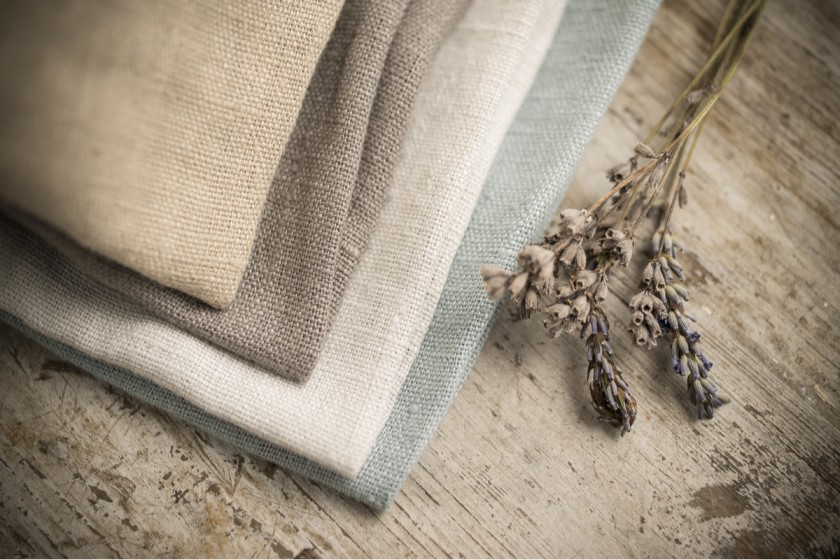
Linen is a famous natural fabric widely used in apparel making. It blends with other natural fibers to make it more resistant to wrinkling. This fabric clothing is extremely breathable and lightweight, making it the perfect fabric for hot days. Linen fabric comes from plants. Its fibers come from the flax plant. Linen is also hypoallergenic in nature meaning it is good for people with allergies or sensitive skin. It needs to be kept carefully as it might get wrinkles and scratches otherwise. Linen fabric needs to be cleaned by professionals to avoid shrinkage.
Pros of Linen Fabric
- It is a breathable and comfortable fabric
- It is affordable
- It is resistant to pilling and fading
- It is very durable
- A low-maintenance fabric
- It is machine-washable
- Linen looks beautiful
Cons of Linen Fabric
- It is not good for everyday use and heavy wear
- It doesn’t do so well in humidity
- The fabric can get wrinkles and soils easily
- It requires professional cleaning and maintenance
- It is prone to shrinking
Conclusion
Fabrics can make or break good apparel. It is a very important part of dressmaking. Different types of fabrics come with different properties. Here are some most popular fabrics for apparel making. You can compare each fabric with the other and select the one for your future venture according to your specific needs. The pros and cons of different types of fabrics can help you decide the fabric that will last longer and serve your purposes in daily life. To get the premium quality fabrics at super affordable prices, check out Fashinza, a B2B apparel manufacturing platform connecting manufacturers with fashion houses.















